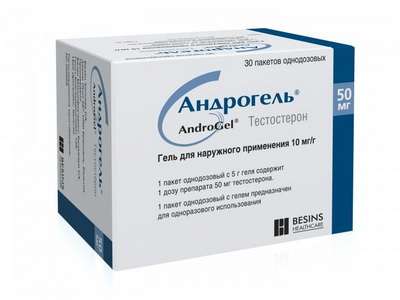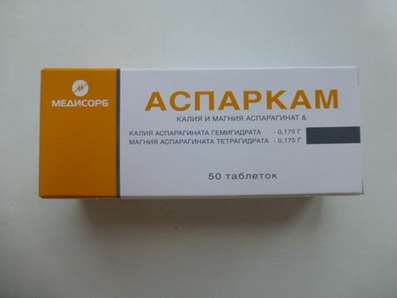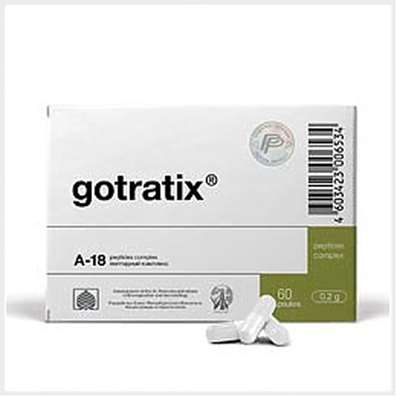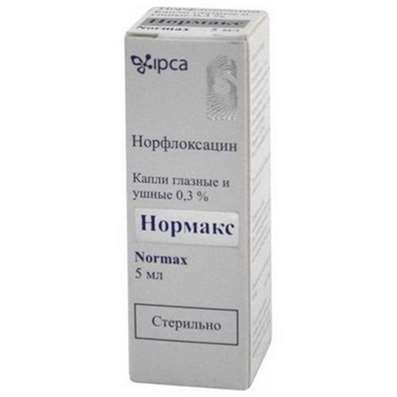Instruction for use: Paroxetine
I want this, give me price
Latin name of substance Paroxetine
Paroxetinum (genus. Paroxetini)
Chemical name
(3S-trans) -3 - [(1,3-Benzodioxol-5-yloxy) methyl] -4- (4-fluorophenyl) piperidine
Gross formula
C19H20FNO3
Pharmacological group:
Antidepressant
The nosological classification (ICD-10)
F32 Depressive episode: Adynamic subdepression; Astheno-adynamic subdepressive states; Asthenoadressive disorder; Astheno-depressive disorder; Asthenodepressive state; Astheno-depressive state; Major Depressive Disorder; Vyaloapatichesky depression with retardation; Double Depression; Depressive pseudodement; Depressive illness; Depressive mood disorder; Depressive disorder; Depressive mood disorder; Depressive state; Depressive disorders; Depressive syndrome; Depressive syndrome larviated; Depressive syndrome in psychoses; Depressed masks; Depression; Depression Depletion; Depression with the phenomena of inhibition within the framework of cyclothymia; Depression is smiling; Involutional depression; Involutionary melancholy; Involutional depression; Manic-depressive disorder; Masked Depression; Melancholic Attack; Neurotic depression; Neurotic depression; Shallow Depression; Organic depression; Organic depressive syndrome; Simple depression; Simple melancholic syndrome; Psychogenic depression; Reactive depression; Reactive depression with moderate psychopathological symptoms; Reactive depressive states; Reactive depression; Recurrent depression; Seasonal depressive syndrome; Severostatic depression; Senile Depression; Symptomatic Depression; Somatogenic depression; Cyclotymic depression; Exogenous depression; Endogenous depression; Endogenous Depressive Conditions; Endogenous Depression; Endogenous depressive syndrome
F33 Recurrent depressive disorder: Major depressive disorder; Secondary depression; Double Depression; Depressive pseudodement; Depressive mood disorder; Depressive disorder; Depressive mood disorder; Depressive state; Depressive syndrome; Depressed masks; Depression; Depression is smiling; Involutional depression; Involutional depression; Masked Depression; Melancholic Attack; Reactive depression; Reactive depression with moderate psychopathological symptoms; Reactive depressive states; Exogenous depression; Endogenous depression; Endogenous Depressive Conditions; Endogenous Depression; Endogenous depressive syndrome
F40.1 Social phobia: Social isolation; Social detachment; Social phobia; Social Anxiety Disorder / Social Phobia; Sociophobia; Sociopathy
F41.0 Panic disorder [episodic paroxysmal anxiety]: Panic state; Panic attack; Panic; Panic disorders
F41.1 Generalized anxiety disorder: Generalized anxiety disorders; Generalized alarm; Phobic neurosis; Anxiety reaction; Anxious neurosis
F42 Obsessive-compulsive disorder: Obsessive-compulsive syndrome; Obsessive compulsive states; Obsessive-compulsive syndrome; The Obsession Syndrome; The obsession neurosis; Obsessive-compulsive neurosis; Obsessions
F43.1 Post-traumatic stress disorder: Combat fatigue; Catastrophe Syndrome; The survivor's syndrome; Traumatic isolation; Traumatic neurosis; Traumatic syndrome; Post-Traumatic Stress Disorder
CAS code
61869-08-7
Characteristics of the substance Paroxetine
Antidepressant group SSRIs.
Paroxetine hydrochloride is an almost white, odorless powder. The solubility in water is 5.4 mg / ml. Molecular weight 374.8.
Paroxetine mesylate is an almost white, odorless powder. Solubility in water is more than 1 g / ml. Molecular weight 425.5.
Pharmacology
Pharmacological action - antidepressant.
Selectively inhibits the reuptake of serotonin by neurons, enhances serotonergic transmission in the central nervous system.
There was a wide individual variability in paroxetine pharmacokinetics. Completely absorbed in the digestive tract. Bioavailability - 50-100%, after repeated intake increases (due to partial saturation of metabolism during the first passage through the liver). Binding to plasma proteins - 95%. Tmax - 2-8 hours (an average of 5.2 hours). The equilibrium concentration in the blood with daily intake is reached after approximately 7-14 days. It is subject to significant metabolism during the first passage through the liver (including with the participation of the isoenzyme CYP2D6) to pharmacologically inactive metabolites. Paroxetine is actively distributed in tissues, about 1% remains in the circulatory system. Vd - 3-28 l / kg (an average of 13 l / kg). T1 / 2 - about 24 hours (within 3-65 h), lengthens in the elderly, with violations of the liver and kidneys. It is excreted for 10 days by kidneys (64%) and intestines (36%), unchanged - 2% and 1%, respectively. With a creatinine clearance of 30-60 ml / min and less than 30 ml / min, Cmax and AUC of paroxetine increase 2 and 4 times, respectively.
Application of substance Paroxetine
Depression of various etiologies, obsessive-compulsive disorder, panic disorder, social phobias, generalized anxiety disorder, post-traumatic stress disorder.
Contraindications
Hypersensitivity, simultaneous administration of MAO inhibitors (and 2 weeks after their cancellation), age to 18 years (efficacy and safety not established).
The combined use of paroxetine with linezolid (MAO inhibits) is contraindicated - the risk of developing serotonin syndrome.
The combined use of paroxetine with thioridazine is contraindicated - the risk of serious side effects from the CVS.
Restrictions on the use
Closed-angle glaucoma, prostatic hyperplasia, mania, heart pathology, epilepsy (in case of unstable epilepsy, paroxetine should be avoided), convulsive conditions, the appointment of electropulse therapy, taking drugs that increase the risk of bleeding; presence of risk factors for increased bleeding; diseases that increase the risk of bleeding; old age, hepatic and / or renal insufficiency.
Application in pregnancy and lactation
The action category for the fetus by FDA is D.
For the duration of treatment, breastfeeding should be discontinued (paroxetine penetrates into breast milk in concentrations close to those in serum).
Side effects of substance Paroxetine
From the side of the nervous system and sensory organs: dizziness, headache, migraine, drowsiness, insomnia, increased excitability, nervousness, anxiety, irritability, emotional lability, asthenia, neurosis, impaired concentration, disturbance of thinking, aggressiveness, hostility, tremor, convulsions, extrapyramidal disorders, hallucinations, euphoria, mania or hypomania, confusion, agitation, depersonalization, amnesia, panic attacks, paresthesia, serotonin syndrome, visual impairment, taste change.
From the musculoskeletal system: arthralgia, myalgia, myopathy, myasthenia gravis.
From the genitourinary system: a violation of sexual function, including ejaculation disorders, decreased libido, anorgasmia, urinary retention or increased urination.
On the part of the digestive tract: decreased / increased appetite, nausea, vomiting, dry mouth, constipation / diarrhea; in very rare cases - hepatitis.
From the cardiovascular system: increase or decrease in blood pressure, orthostatic hypotension, a feeling of palpitations.
Allergic reactions: rash, hives, ecchymosis, itching, angioedema.
Other: myalgia, rhinorrhea, increased sweating, hyponatremia, ADH secretion, hyperprolactinaemia / galactorrhea, weight loss / increase, withdrawal syndrome (with abrupt withdrawal of paroxetine).
Interaction
Incompatible with MAO inhibitors (including furazolidone, procarbazine, selegiline), tryptophan and lithium salts (risk of developing serotonin syndrome). Antacids do not affect absorption. Simultaneous reception with cimetidine increases Css paroxetine by 50%, with digoxin - reduces AUC digoxin by 15%. Inhibits the metabolism of tricyclic antidepressants (amitriptyline, imipramine, desipramine) and astemizole, increasing their concentration in the blood and the risk of side effects. Increases the plasma concentration of theophylline, mutually reduces bioavailability in combination with phenytoin. Phenobarbital and primidone reduce the bioavailability of paroxetine. With simultaneous administration with fluoxetine, phenothiazine derivatives (thioridazine), class I antiarrhythmics (propafenone, flecainide), sumatriptan increases the risk of side effects. Simultaneous reception with warfarin can cause hemorrhagic syndrome with unchanged PV value. Although paroxetine does not alter the metabolism of alcohol and, apparently, does not enhance its effect on cognitive and psychomotor function in healthy people, their simultaneous administration in patients with depression is not recommended.
Update of information
Interaction with thioridazine
Thioridazine causes prolongation of the QTc interval, which is associated with severe ventricular arrhythmias, such as torsade de pointes, and the risk of sudden death. This effect is dose-dependent.
In vivo studies indicate that drugs that inhibit CYP2D6, such as paroxetine, increase the level of thioridazine in the blood plasma. In this regard, do not use paroxetine in combination with thioridazine.
Overdose
Symptoms: nausea, vomiting, severe dry mouth, pronounced drowsiness, irritability, sinus tachycardia, tremor, dilated pupils.
Treatment: symptomatic. To remove from the stomach of the unsweetened part of the drug, it is necessary to induce vomiting or rinse the stomach. A specific antidote was not found. Forced diuresis, hemodialysis, hemoperfusion and exchange blood transfusion are ineffective (due to the high volume of distribution and high degree of binding to plasma proteins).
Routes of administration
Inside.
Precautions for the substance Paroxetine
The interval between the cancellation of MAO inhibitors and the onset of paroxetine intake or its withdrawal and the initiation of MAO inhibitors should be at least 14 days. It is possible to increase the symptoms of panic disorder at the initial stage of therapy (simultaneous reception of anxiolytics within 2 weeks is recommended). It requires careful monitoring of patients with suicidal tendencies, especially at the beginning of treatment.
With a pronounced sedative effect, paroxetine should be taken in the evening. In 2-10% of the population marked genetically determined low activity isozyme CYP2D6, slowing of metabolism which is manifested paroxetine and increased frequency of adverse reactions (dose required correction).
During treatment, it is not recommended to drink alcohol.
With caution appoint drivers of vehicles and people whose activities require increased concentration and speed of psychomotor reactions.
Update of information
Risk of closed-angle glaucoma
Dilated pupils, which is observed after application of many anti-depressants, including paroxetine, can provoke attack angle-closure glaucoma patients with anatomically narrow anterior chamber angle.
Information for patients. The patient should be aware that taking paroxetine can cause a slight dilation of the pupils, which in susceptible individuals may lead to the episode of angle-closure glaucoma.

 Cart
Cart





